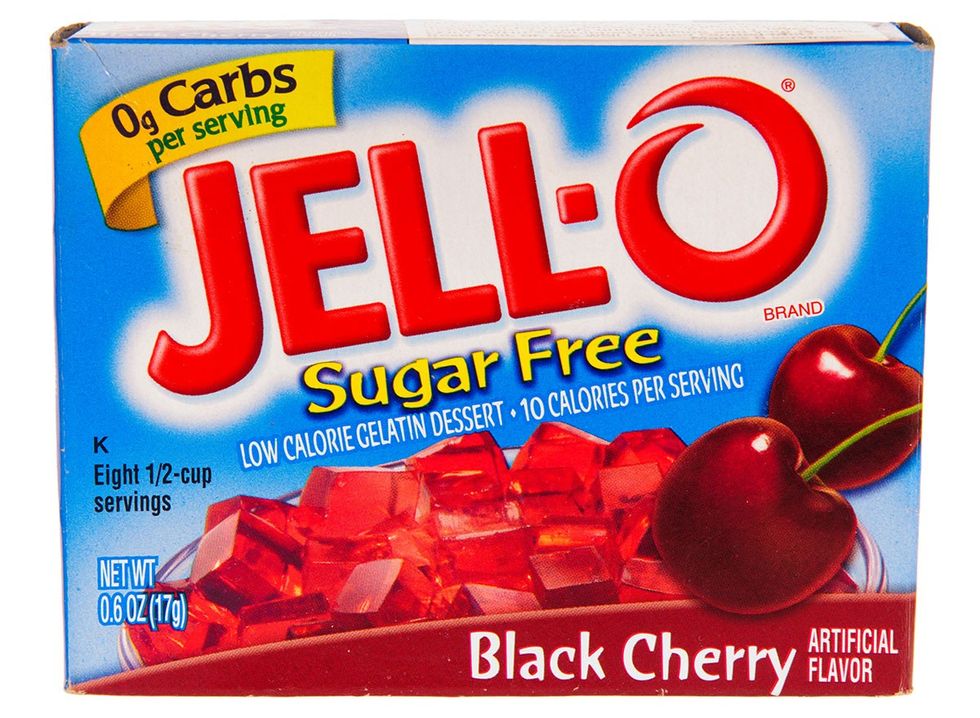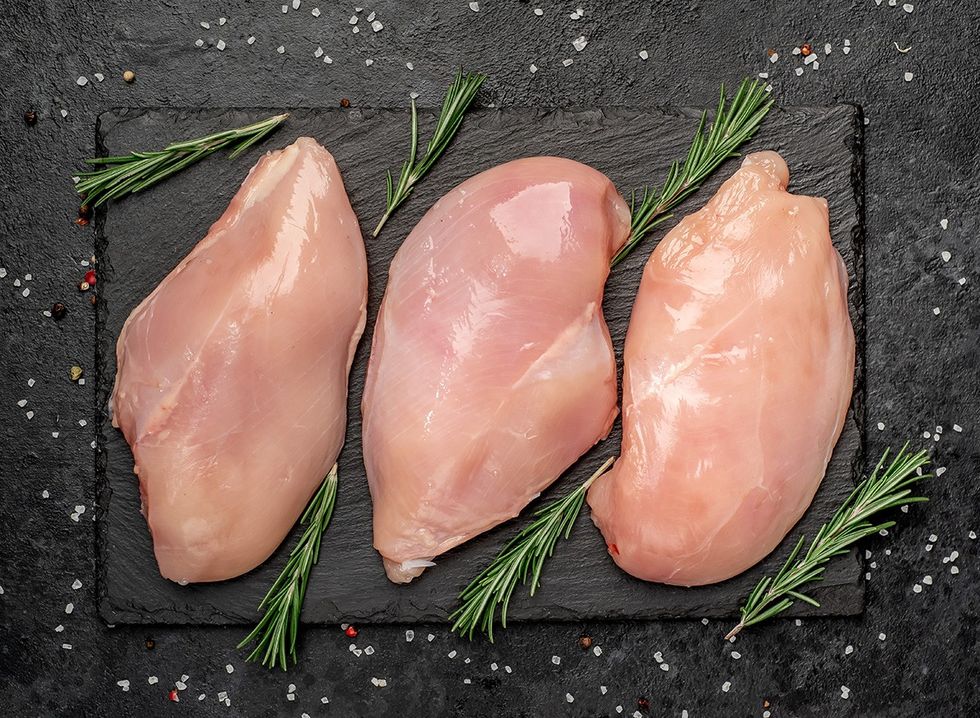When it comes to weight loss (or weight maintenance) foods, it’s important to focus on options that are satisfying, delicious, and, most importantly, healthy. “Studies have shown that satiety-promoting foods, those that prolong digestion and reduce appetite, may facilitate weight loss by helping to reduce energy intake,” Kathy Beerman, PhD, tells the American Society For Nutrition. Here are seven foods that give you the best bang for your buck in terms of nutrition and satiety.
Our Favorite Superfood, Eggs

Eggs are powerhouses of nutrition and, thanks to the protein amount, very satiating. “Eggs are a good source of protein (both whites/yolk),” says internal medicine specialist Kurt Hong, MD, via Keck Medicine of USC. “They also contain heart-healthy unsaturated fats and are a great source of important nutrients, such as vitamin B6, B12 and vitamin D.”
Avocados vs Semaglutide

Did you know that yummy, filling avocados encourage fat burning by triggering GLP-1 secretion? “This means a healthy diet, high in GLP-1 stimulating nutrients can increase GLP-1 levels,” nutritionist Dr. Emma Beckett tells Diabetes UK. “This could be foods with good fats, like avocado or nuts, or lean protein sources like eggs. And foods high in fermentable fibers, like vegetables and whole grains, feed our gut bacteria, which then produce short chain fatty acids able to trigger GLP-1 secretion.”
RELATED: I Lost 50 Pounds While Eating These Foods Every Day
Fiber-Rich Oatmeal

Oatmeal, especially with healthy low-sugar fruit toppings, are another great choice for a filling, healthy option. “Foods like oatmeal that contain higher amounts of fiber may help aid with satiety and can reduce the risk of overeating," Kristen Smith, MS, RDN, spokesperson for the Academy of Nutrition and Dietetics and registered dietitian at Piedmont Health, tells USA Today.
Fatty Fish

Fatty, protein-packed fish like salmon is a great option for a filling yet healthy food. “Salmon is often a top protein pick by dietitians and other health experts,” according to UnityPoint Health. “It’s low in saturated fat and high in omega-3s. It’s also a good source of vitamin B12, potassium and vitamin D. Salmon is versatile and easy to prepare. The higher fat content (compared to flounder) makes it a more satisfying and filling meal.”
Dark Chocolate

Yes, you can still have treats without worrying about your waistline! Studies show dark chocolate can help curb hunger and suppress appetite. “And you’ll need less of it to get satisfaction than you would from other sweets,” dietitian Devon Peart, MHSc, BASc, RD, tells the Cleveland Clinic. “Dark chocolate is comforting. It signals to your brain that you’re satisfied and finished. And it is satiety-inducing [feeling satisfied], so you are more likely to feel like you’ve had enough.”
Cottage Cheese

Cottage cheese is a great source of protein and calcium, experts say. “Choosing a low-fat cottage cheese can reduce saturated fat intake when substituting it for other higher fat foods, such as cream cheese, sour cream, mayonnaise or ricotta cheese,” according to Carly Zimmer, a clinical dietitian at OSF HealthCare. “It’s also full of vitamins and minerals that support a healthy diet. It contains vitamins like phosphorus, potassium and vitamin B12.”
RELATED: 7 Walking Tips That Reduce Belly Fat Fast
Greek Yogurt

Greek yogurt is an excellent satiating snack. “Greek yogurt is high in protein, which helps promote fullness,” according to UT Medical Center. “A typical 6-ounce serving contains 15 to 20 grams, the amount in 2 to 3 ounces of lean meat. That makes it particularly appealing to vegetarians, who sometimes struggle to get enough of the nutrient. An identical serving of regular yogurt, on the other hand, provides just 9 grams, meaning you may feel hunger pangs sooner.”
💪🔥Body Booster: High protein foods are best for filling you up without derailing your fitness regimen.














 2. Dill Pickles: 12 caloriesShutterstock
2. Dill Pickles: 12 caloriesShutterstock 1. Sugar-free Jello: 11 caloriesShutterstock
1. Sugar-free Jello: 11 caloriesShutterstock Shutterstock
Shutterstock Sweet PotatoesShutterstock
Sweet PotatoesShutterstock BerriesShutterstock
BerriesShutterstock Shutterstock
Shutterstock Low-Carb Noodle SolutionShutterstock
Low-Carb Noodle SolutionShutterstock Shutterstock
Shutterstock 9. Zucchini: 17 caloriesShutterstock
9. Zucchini: 17 caloriesShutterstock

 Jeremy Ethier/YouTube
Jeremy Ethier/YouTube Shutterstock
Shutterstock Shutterstock
Shutterstock
 Jeremy Ethier/YouTube
Jeremy Ethier/YouTube
 Shutterstock
Shutterstock Shutterstock
Shutterstock Shutterstock
Shutterstock Shutterstock
Shutterstock Shutterstock
Shutterstock
 Shutterstock
Shutterstock Shutterstock
Shutterstock Shutterstock
Shutterstock Shutterstock
Shutterstock Shutterstock
Shutterstock Shutterstock
Shutterstock Shutterstock
Shutterstock

 I'm a Nutritionist and These 9 High-Protein Snacks Keep My Clients Full While Losing 50 Pounds
I'm a Nutritionist and These 9 High-Protein Snacks Keep My Clients Full While Losing 50 Pounds
 Shutterstock
Shutterstock 2. Processed FoodsShutterstock
2. Processed FoodsShutterstock Shutterstock
Shutterstock Shutterstock/Prostock-studio
Shutterstock/Prostock-studio Shutterstock
Shutterstock Pro TipsShutterstock
Pro TipsShutterstock Shutterstock
Shutterstock Shutterstock
Shutterstock Shutterstock
Shutterstock Shutterstock
Shutterstock Don’t Drink as Much AlcoholShutterstock
Don’t Drink as Much AlcoholShutterstock Most Women on GLP-1s Are Making a Few Common MistakesShutterstock
Most Women on GLP-1s Are Making a Few Common MistakesShutterstock Soda and Sugary DrinksShutterstock
Soda and Sugary DrinksShutterstock Shutterstock
Shutterstock Eat BreakfastShutterstock
Eat BreakfastShutterstock And Improve Insulin SensitivityShutterstock
And Improve Insulin SensitivityShutterstock Belly Flab Strip Tip: Sugar and Fat Calories Leave Its Mark on Your BodyShutterstock
Belly Flab Strip Tip: Sugar and Fat Calories Leave Its Mark on Your BodyShutterstock Shutterstock
Shutterstock The Drugs Mimic the GLP-1 Hormone Naturally Produced by the BodyShutterstock
The Drugs Mimic the GLP-1 Hormone Naturally Produced by the BodyShutterstock 3. Deep-Fried ItemsShutterstock
3. Deep-Fried ItemsShutterstock